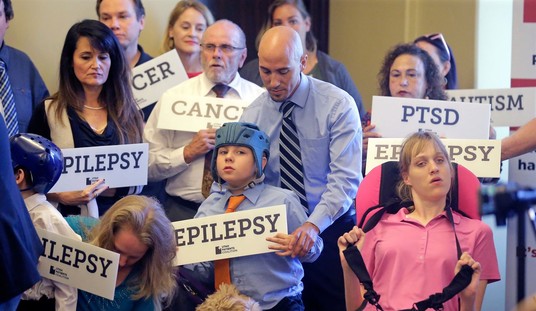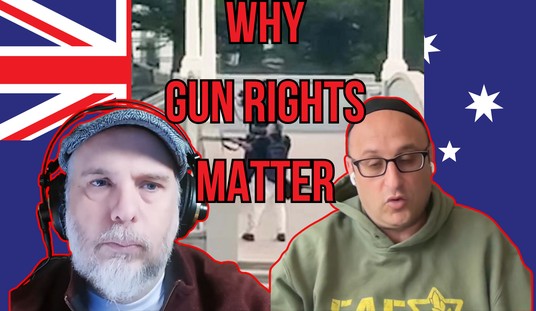We all know the issues with far too many stories when it comes to guns and gun control, so when something comes along that really does attempt to offer a fair shake to gun owners and a somewhat comprehensive look at the various facets of “gun violence” without demanding some sort of anti-gun legislative cultural response, I think it’s worth highlighting.
I first ran across Milwaukee Journal-Sentinel reporter John Diedrich’s work when he was covering the botched ATF sting operation in the city, where the agency opened up a fake storefront and began trying to buy illicit guns from local criminals. The whole sad saga is too long to repeat here, but Diedrich did a thorough job of uncovering and reporting on things like ATF agents working undercover as a biker gang out of New York using a local from the neighborhood who has a developmental disability to serve as their local hype man, or allowing convicted felons to walk out of their fake store with a loaded gun. A DOJ Inspector General’s report was so damning that ATF hasn’t done a storefront sting operation (at least that we know of) since it was released.
I knew Diedrich was a good reporter, and when I saw that he’d spent nine months investigating gun-involved deaths in Wisconsin as a fellowship in O’Brien Public Service Journalism at Marquette University, I hoped that he’d bring that same professionalism to the series that I’d seen in his earlier reports. I was an investigative reporter myself for a few years early in my radio career, and one of the things my mentor and news director taught me is that a good investigative reporter is someone who has more questions than answers going into a particular story. They allow the story to develop on its own rather than trying to force it into a preconceived agenda, and Diedrich himself talks about how that transpired with this series in his reporter’s note.
Some coroners and medical examiners were skeptical of our project at first, feeling like it had an anti-gun angle. As I talked to them and explained the approach, their tone changed. I learned many of them are overworked and underpaid, yet they were extremely helpful for our project.
Then I started dialing experts on gun deaths. Many gave me the same lines that I heard – some literally word-for-word – over the years.
Then I talked to John Roman, director of the Center on Public Safety and Justice at the University of Chicago. He said something I hadn’t heard.
“I’m gonna get my liberal progressive card pulled for saying some of these things, but that’s OK,” Roman said. “What’s interesting, what never gets taught, is how many people buy a gun, and then nothing happens. It doesn’t go off accidentally. It’s not used in a suicide. It doesn’t get lost or stolen or sold and becomes a crime gun. Hundreds of millions of guns fit into that category, and I’m really interested in what we can learn about that, to help us improve public safety in a gun-owning world. What are these people doing?”
What is not happening? And given how many guns are in circulation, maybe it is surprising more tragic deaths are not happening.
I had to find those everyday gun owners and learn more.
If every reporter covering “gun violence” in all its forms kept Roman’s observation in the forefront of their mind when they were writing their stories, the media landscape would be a very different place. Diedrich could easily have used the issue of gun-involved deaths to suggest that the answer is an “assault weapons ban”, mandatory storage laws, or any number of anti-gun policies if that’s what he wanted, but that isn’t what he wanted. He wanted to learn what exactly “gun violence” in Wisconsin is, and if there is any editorializing on his behalf it comes across to me as more “don’t look for simple solutions to a complicated problem” than anything else.
Diedrich starts by doing something that far too many media outlets don’t – defining what “gun deaths” are, and acknowledging that successful efforts to address homicides are going to look very different from those efforts to address suicides, which will also differ from efforts to address accidental/negligent deaths.
Diedrich’s series spends a lot of time on the issue of gun-involved suicides because out of every 100 gun-involved deaths in Wisconsin, 71 were instances of someone taking their own life. That is a heartbreaking figure; more than 500 lives lost in 2022, and about half of all reported suicides in the state. Again, it would be easy for Diedrich to salt his story with quotes from gun control activists blaming the gun lobby or promising an end to all “gun violence” if lawmakers would just impose this ban or that restriction, but instead he introduces us to a wide variety of gun owners who are working to address this problem and save lives, like Mike Sodini from Walk the Talk America and Chuck Lovelace, a Wisconsin gun store owner who will temporarily store firearms for someone who wants or needs to remove them from the home for a few days or even weeks.
Yes, some of the gun owners Diedrich spoke to are in favor of some gun control laws, like the coroner and gun owner who votes Democratic, doesn’t support a ban on AR-15s, but does back “red flag” laws. We also hear, however, from a single mom who decided to purchase a firearm to protect herself and her daughters, a Milwaukee man who carried a gun illegally as a teen but is now a pastor and firearms instructor, and a host of other stereotype-busting individuals who are all exercising their Second Amendment rights.
I don’t know if I’d call Diedrich “pro-gun”, but I do think he understands that more than 400 million firearms in this country and the tens of millions of Americans who own them aren’t going anywhere. As he wrote in his reporter’s notebook:
In the world of experts, I also found there are differences. A number of researchers flatly state the safest house is the one without a gun. The numbers do back them, yet that message may not be the most effective, others observe.
Emmy Betz, a Denver doctor, likens that message to saying “the only safe sex is no sex.” There are millions of guns and people generally are not going to get rid of them, she said.
“Do I think we all should educate the public about the potential risks of owning a gun? Sure. But I think to say the only model we should put out there is this sort of abstinence approach, I just feel like it is missing the opportunity to help prevent injuries and deaths.”
As it turns out, there’s some common ground to be found when the goal is to prevent misuse of firearms instead of trying to eradicate them from existence.
Diedrich’s 14-part series is extensive, and you can read it in its entirety here. My colleague Tom Knighton is going to take a closer look at one Diedrich’s pieces later today, but I wanted to give a general overview of what is the most balanced and nuanced mainstream reporting on gun owners and “gun violence” that I’ve run across in recent years.









Join the conversation as a VIP Member